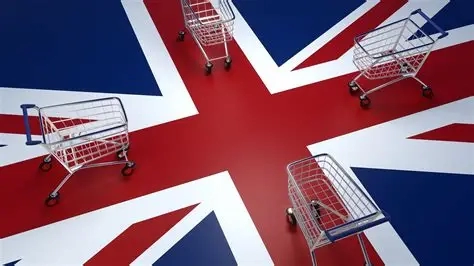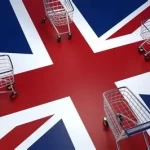London, UK – September 30, 2025 – The UK’s high streets are navigating a complex and challenging landscape in 2025, with performance showing a stark divergence from the tentative recovery seen in 2024. The story of retail this year cannot be told without understanding the significant political shifts of the past two years. A protracted period of economic uncertainty leading up to the General Election of late 2024, and the subsequent change in government, has created a new set of pressures and priorities that are now being felt acutely across the sector.
A combination of persistent inflation, sluggish economic growth, and evolving consumer habits has created a difficult trading environment. However, these factors have been amplified by a political agenda focused on resetting the UK’s economic policy. The new government’s first budget in the spring of 2025, while aiming to bolster household finances, has simultaneously introduced new cost pressures for businesses, leaving many retailers caught in a difficult bind.
The Election Effect and Consumer Caution
The lead-up to the 2024 election saw a palpable sense of caution descend upon the economy. For much of that year, consumer confidence remained fragile as households awaited clarity on the nation’s future direction. This “wait-and-see” approach suppressed discretionary spending, a trend that has lingered into 2025. While the government’s policies, such as targeted support for low and middle-income families, were intended to unlock spending, the ongoing impact of inflation means many consumers are yet to feel a tangible improvement in their disposable income, continuing to prioritise essentials over non-essentials.

This has widened the gap between online and in-store sales performance. While overall retail sales have seen modest growth, this has been largely propped up by the digital marketplace. In contrast, traditional high street stores have experienced flatter sales, struggling to match the levels of footfall seen in the previous year.
Policy in Practice: The Double-Edged Sword of Rising Costs
A central plank of the new government’s platform was a commitment to improving pay and working conditions. This has translated into a significant increase in the National Living Wage in April 2025. While a welcome development for employees, this has substantially increased operational costs for labour-intensive retailers, particularly in the hospitality and service sectors.
This new wage pressure has been compounded by the long-standing issue of business rates. Despite promises of fundamental reform, the changes implemented so far have offered little immediate relief to the majority of high street businesses. Many retailers describe this as a double-edged sword: consumer spending power is being squeezed by the wider economy, while the cost of doing business is being actively driven up by policy.
The fashion and homeware sectors have been particularly affected by this combination of cautious consumer spending and rising overheads. The challenging climate has inevitably led to a continuation of store closures, with several prominent retailers rationalising their store portfolios in response to reduced profitability.
Pockets of Resilience and an Adaptive Future
However, the 2025 narrative is not one of uniform decline. The government’s focus on supporting lower-income households has provided a degree of stability for the discount retail and grocery sectors. These value-oriented businesses have proven resilient, maintaining their performance levels from 2024 as shoppers continue to seek value for money.
Amid the challenges, there are also clear signs of adaptation. The political and economic pressures have forced many retailers to accelerate their innovation plans. There is a growing move towards “experiential retail,” with stores focusing on creating unique in-store experiences that cannot be replicated online. This includes events, workshops, and personalised services designed to rebuild footfall and brand loyalty.
Furthermore, the integration of technology is accelerating as a tool for efficiency and engagement. Retailers are using data analytics to understand customer behaviour and employing technologies like click-and-collect and seamless payment options to bridge the gap between their online and offline operations.
Looking ahead to the crucial final quarter, the outlook remains mixed. The political and economic policies of the last year have reshaped the environment in which retailers operate. Success will depend on their ability to navigate rising costs while providing the value and experience that a cautious consumer demands. The performance of the UK high street in 2025 serves as a clear indicator that the sector is in a state of profound transformation, with the political decisions made in Westminster directly influencing the fortunes of businesses on every high street in the country.





No responses yet